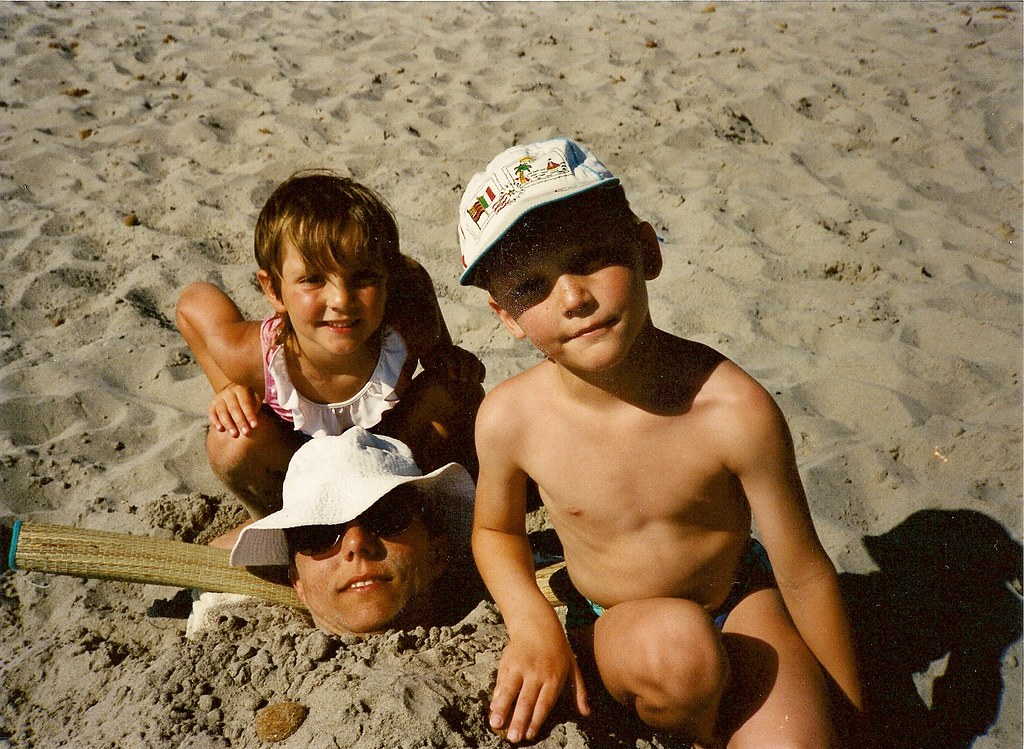
The journey through a neurodegenerative disease like frontotemporal dementia (FTD) is profoundly challenging, not only for the individual diagnosed but also for their entire family. Recent public discussions surrounding actor Bruce Willis and his battle with FTD have illuminated the complex decisions families face. Emma Heming Willis, his wife, has openly shared her experiences, including the difficult choice to move Bruce into a separate home for dedicated, round-the-clock care. This decision, while deeply personal, reflects the intricate balance between providing optimal care and maintaining family dynamics.
Emma Heming Willis’s candidness, particularly in the ABC special “Emma & Bruce Willis: The Unexpected Journey,” has spurred vital conversations. Her transparency, detailing the emotional toll and practical considerations, underscores the multifaceted nature of dementia care. The ‘right’ choice often combines expert advice, financial realities, and an unwavering commitment to the patient’s dignity and safety, while also acknowledging other family members’ needs, especially young children.
This in-depth exploration will delve into the initial phases of this care journey, examining the rationale behind significant living arrangement decisions. We will consider professional insights guiding families, the personal sacrifices made by caregivers, and specific environmental adaptations for conditions like FTD. Understanding these elements provides a clearer picture of the immense challenges and profound love underpinning care for individuals facing progressive neurological decline.

1. **The Difficult Decision to Relocate Bruce Willis** Emma Heming Willis has characterized the decision to move her husband, Bruce Willis, into a separate home as “one of the hardest decisions” she has made. This significant change, revealed in the ABC special and reiterated in an interview with People, means Bruce, diagnosed with frontotemporal dementia, now resides in his own nearby home under the supervision of a full-time care team. This arrangement facilitates specialized, continuous care tailored to his evolving needs.
A primary driver for this personal choice was Bruce’s well-being and, crucially, the needs of their daughters, Mabel, 13, and Evelyn, 11. Emma explained Bruce “would want them to be in a home that was more tailored to their needs, not his needs.” This highlights balancing the patient’s requirements with those of other family members, particularly young children. The living arrangement aims to create supportive environments for everyone.
Though “heartbreaking,” the move was deemed necessary as FTD “requires a calm and serene atmosphere.” Emma observed that “everything just feels a lot calmer, more at ease now” in the new setup. This underscores the profound impact of environment on FTD patients and the relief found in choices leading to a more peaceful existence for all. This relocation represents a strategic, loving choice for comprehensive care, rather than neglect.

2. **The Impact of Relocation on Dementia Patients** Relocating a dementia patient can have complex effects on their well-being. Mallory Grivner, a licensed clinical social worker, told Us Weekly that “oftentimes staying at home can be advantageous, as it provides a familiar environment that can then promote the continuation of one’s routine.” Familiarity can foster greater independence, a key consideration in dementia care.
However, Grivner cautioned that “leaving a family home can be an immense source of loss and grief that can exacerbate dementia and/or depressive symptoms at times.” This highlights a delicate balance: while new environments offer specialized care, the emotional impact of change on a person with dementia requires careful consideration and support during transition.
Dr. Kylie Meyer, a gerontologist, noted it is “not uncommon for persons living with dementia to live in a separate residence than their primary caregiver, such as assisted living or memory care facilities.” This normalizes alternative living arrangements when home care is unfeasible. Meyer acknowledged that a “second home” for care, as with Bruce Willis, is “far less common, understandably, due to the cost constraints,” indicating the unique resources some families possess.
Meyer emphasized that “families should do what makes most sense for their unique situations” and that relocation becomes necessary “when a home environment isn’t safe.” This reinforces that the decision is highly individualized, driven by specific patient needs, safety concerns, and family capabilities.

3. **Key Factors Driving Living Arrangement Choices** The decision-making process for dementia patient living arrangements is multifaceted, involving numerous practical and personal factors. Mallory Grivner outlined critical considerations: “available caregivers, physical setup of the home, the individual’s care needs, goals of care and finances.” Each element significantly influences the most suitable care environment.
Caregiver availability and capacity are often paramount. As dementia progresses, caregiving demands can become overwhelming, necessitating professional assistance. The physical home layout is another practical concern; a multi-story house may become unsafe for someone with mobility issues or a tendency to wander, requiring potentially infeasible modifications.
Individual care needs are central. FTD, for example, often involves significant behavioral and communication changes, requiring specialized environments and consistent professional oversight that a family home cannot always provide. Goals of care, which evolve, also influence decisions. Finally, financial resources are a significant determinant, as round-the-clock professional care is exceptionally costly.
Grivner stresses identifying wishes while capable of participation, highlighting proactive planning. She also notes the dynamic nature of these decisions, stating, “these decisions can and often change.” This emphasizes the need for flexibility and ongoing reassessment as the disease progresses, allowing for adjustments without guilt.

4. **Navigating the Challenges of Caregiving** Caregiving for a loved one with frontotemporal dementia presents profound challenges, impacting caregivers’ emotional and psychological well-being. Emma Heming Willis openly shared her struggles, admitting to seeking treatment for depression while searching for solutions for Bruce. This highlights the immense mental health toll of intense caregiving.
Mallory Grivner emphasized the pervasive guilt caregivers often feel, stating, “Oftentimes people feel guilty about requiring a placement for a loved one, but caregiving is extremely challenging and taking care of your own needs is important.” This validates caregivers’ struggles, affirming that seeking external support is not a failure but a necessary act of self-preservation. Neglecting one’s own health can compromise patient care.
Dr. Kylie Meyer further stressed caregiver well-being, especially for spousal caregivers. She noted, “many types of dementia can seriously impact their ability to get a good night’s sleep, which is so needed to take care of themselves and the care recipient.” Relentless demands and disturbed sleep can lead to severe exhaustion and burnout, making caregiver needs a fundamental part of sustainable long-term care.
Community responses echoed these sentiments. Readers shared experiences of exhaustion and difficult decisions. One commented, “I am exhausted… Until you have lived it, I would suggest withholding criticism of those that are.” Such testimonials validate the extreme challenges of dementia caregiving, reinforcing that professional support is often unavoidable and essential for all involved.

5. **Emma Heming Willis Addresses Public Scrutiny** Emma Heming Willis courageously addressed public criticism after relocating Bruce Willis for specialized care. Following her interview with Diane Sawyer, critics accused her of neglecting her husband. Emma responded via Instagram, advocating for caregivers who face judgment from those unfamiliar with their realities.
Emma stated, “Too often, caregivers are judged quickly and unfairly by those who haven’t lived this journey or stood on the front lines of it.” She emphasized sharing her story to “create connection and validation for those actually navigating the realities of caregiving every day,” aiming to foster understanding and solidarity within the caregiving community.
She further articulated that critics “don’t have the experience to back it up,” and therefore “don’t get a say.” This powerful message underscores the unique, lived experience of caregivers, asserting that external judgment often lacks the necessary understanding of complex, day-to-day challenges. Her stance champions the autonomy and difficult decision-making of caregivers immersed in progressive illness.
The Independent reported community support for Emma, noting “many shared their own experiences of caring for loved ones with degenerative illnesses, stressing that such decisions are painful but often unavoidable.” This collective empathy reinforced Emma’s message, validating her choice and countering initial criticism. It underscored widespread recognition that professional, around-the-clock care can be essential as a loved one’s condition rapidly progresses.

6. **Creating a Calmer Environment for FTD Patients** One challenging symptom of frontotemporal dementia (FTD) is sensitivity to noise, significantly impacting a patient’s comfort. Emma Heming Willis highlighted this in the ABC special, explaining FTD “requires a calm and serene atmosphere.” This need was pivotal in moving Bruce to a separate home, designed to mitigate agitation from environmental factors.
Before relocation, Emma described having to “isolate” her family, limiting children’s friends and feeling “isolated” herself. This shows how FTD symptoms reshape family life, necessitating a restrictive environment that prioritizes the patient’s needs but impacts others. Noise-induced agitation concerns illustrate the disease’s pervasive impact on household dynamics.
The dedicated, calmer living space for Bruce directly addresses this sensitivity. Emma noted that after the move, “Everything just feels a lot calmer, more at ease now.” This improvement suggests the new environment successfully provides the serene atmosphere crucial for managing FTD symptoms, reducing potential triggers for discomfort. This proactive measure aims to enhance his quality of life.
Certified caregiving consultant Nancy Treaster, discussing home safety, also emphasized effective environmental management for dementia patients. The principle of controlling the environment to prevent distress or danger aligns with the need for a calm atmosphere. The decision for a quieter, more controlled setting for Bruce matches expert recommendations for optimal living conditions for FTD individuals, prioritizing their sensory and behavioral needs.

7. **Restoring Normalcy for Children Amidst Illness** A parent’s dementia progression profoundly disrupts children’s normalcy. Emma Heming Willis shared how Bruce’s illness initially led her to “isolate” their daughters, Mabel and Evelyn. She worried loud noises would trigger agitation, causing her to “cut down on playdates and sleepovers,” acknowledging “the girls were isolated too, and that was by design.” This highlighted the hidden costs of managing severe illness within the family home.
Moving Bruce to a dedicated care home was partly a strategic step to restore childhood normalcy for Mabel and Evelyn. Emma articulated: “We have two young children, and it was just important that they had a home that supported their needs and that Bruce could have a place that supported his needs.” This allowed a fundamental shift in family dynamics, creating distinct spaces tailored to each member’s differing requirements.
With Bruce receiving proper care, the children have found “some sense of normalcy.” Emma confirmed, “The kids can have playdates and sleepovers [again] and not have to walk around tiptoeing.” This ability to socialize freely and experience typical childhood activities is crucial for their development and well-being, demonstrating how difficult care decisions can lead to positive outcomes for other family members.

The journey through frontotemporal dementia, as exemplified by Bruce Willis and his family, is one marked by profound challenges, difficult decisions, and an unwavering commitment to love and care. The candid sharing by Emma Heming Willis, combined with expert insights and widespread community support, has illuminated the complex realities of living with and caring for someone with FTD. It underscores that while the path is arduous, it is navigated with resilience, adaptability, and the enduring strength of human connection, all aimed at ensuring dignity, safety, and a measure of peace for those affected.


:max_bytes(150000):strip_icc()/Priscilla-Presley-Riley-Keough-Emmys-092125-86904debba7d4ac9823f068d889ffb76.jpg)
